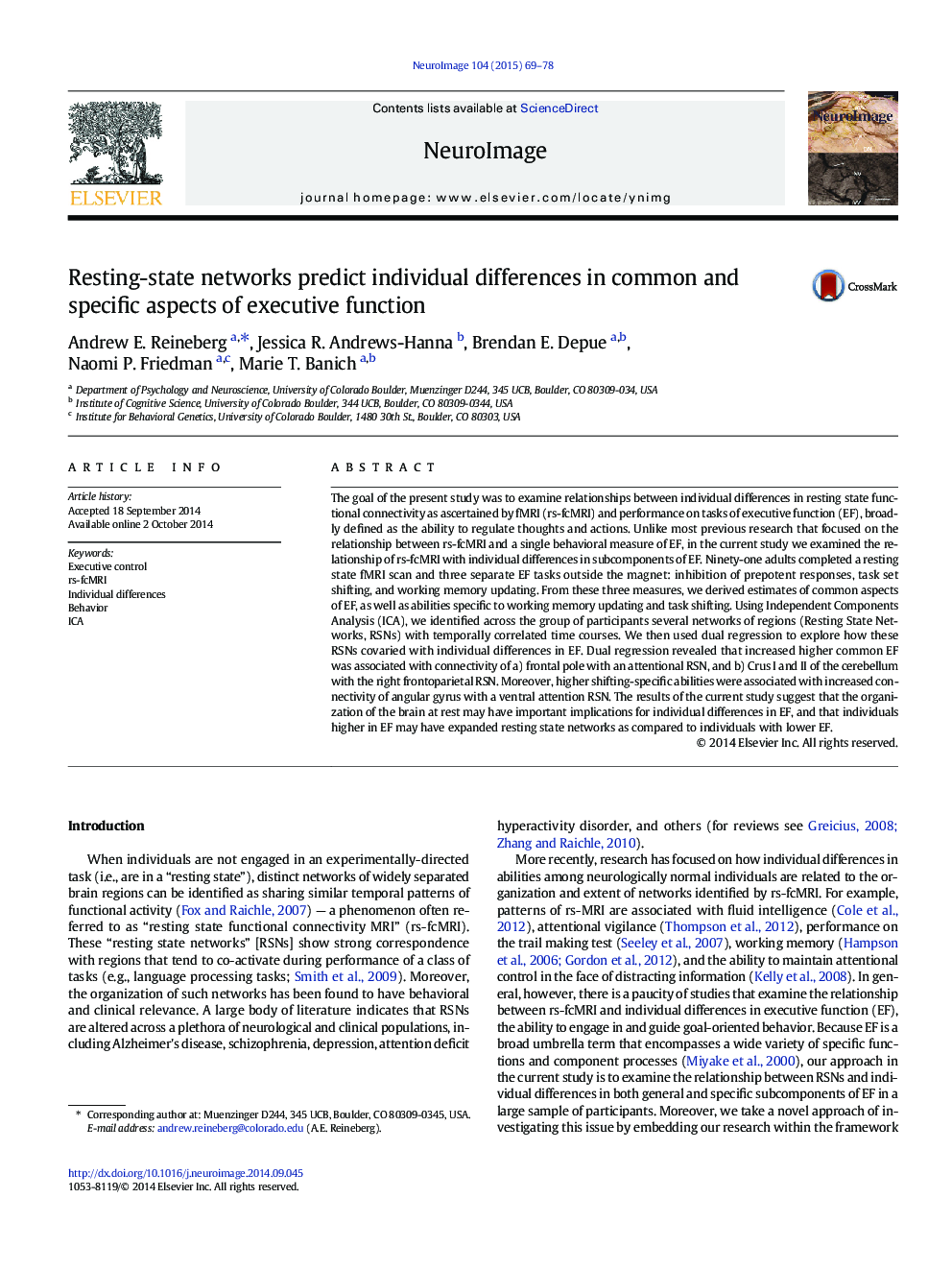| Article ID | Journal | Published Year | Pages | File Type |
|---|---|---|---|---|
| 6026439 | NeuroImage | 2015 | 10 Pages |
â¢Resting-state brain activity is related to executive function ability.â¢We investigate network dynamics using ICA and dual regression.â¢Better Common EF is associated with alteration of control and attention networks.â¢Better shifting-specific EF is associated with alteration of an attention network.
The goal of the present study was to examine relationships between individual differences in resting state functional connectivity as ascertained by fMRI (rs-fcMRI) and performance on tasks of executive function (EF), broadly defined as the ability to regulate thoughts and actions. Unlike most previous research that focused on the relationship between rs-fcMRI and a single behavioral measure of EF, in the current study we examined the relationship of rs-fcMRI with individual differences in subcomponents of EF. Ninety-one adults completed a resting state fMRI scan and three separate EF tasks outside the magnet: inhibition of prepotent responses, task set shifting, and working memory updating. From these three measures, we derived estimates of common aspects of EF, as well as abilities specific to working memory updating and task shifting. Using Independent Components Analysis (ICA), we identified across the group of participants several networks of regions (Resting State Networks, RSNs) with temporally correlated time courses. We then used dual regression to explore how these RSNs covaried with individual differences in EF. Dual regression revealed that increased higher common EF was associated with connectivity of a) frontal pole with an attentional RSN, and b) Crus I and II of the cerebellum with the right frontoparietal RSN. Moreover, higher shifting-specific abilities were associated with increased connectivity of angular gyrus with a ventral attention RSN. The results of the current study suggest that the organization of the brain at rest may have important implications for individual differences in EF, and that individuals higher in EF may have expanded resting state networks as compared to individuals with lower EF.
